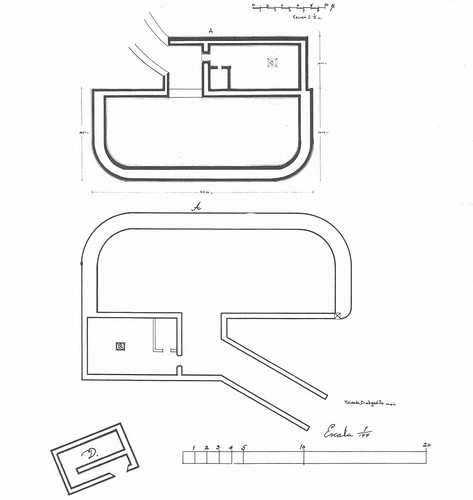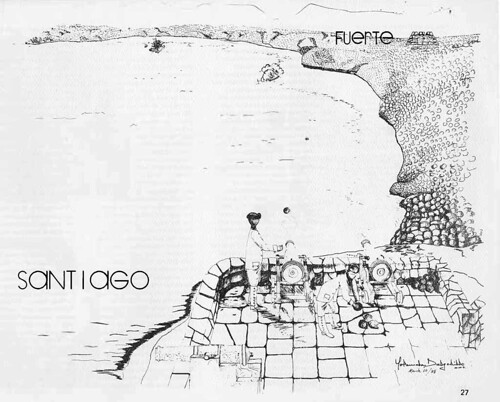Fort Santiago
Building Guam’s defenses
Fort Santiago was the second of three Spanish forts built to defend the anchorage at Apra Harbor. The fort was constructed at the tip of Orote Peninsula on the southwestern coastline of Guam. Its location, atop a sheer cliffline overlooking the entrance to the harbor, made it a formidable defensive force.
Despite mixed reactions to the importance of the Marianas in the early 1700s, Spain’s Council of the Indies believed that Guam was an important asset. The defense of the island was considered essential in order to deny occupying forces from taking the Marianas and thereby threatening Spain’s galleon trade with the Philippines as well as its Christian missions in the Pacific. Concerned by the increasing presence of enemy ships in the Pacific and troubled by the 1721 English privateer attack of a Cavite supply ship anchored at Malesso’, Spain issued orders to strengthen Guam’s defenses.
In 1734, under the administration of Governor Francisco de Cárdenas Pacheco (1734 – 1740), a new anchorage was opened in Apra Harbor and by the 1740s most ships, including the wintering Cavite ships, anchored in the harbor. This anchorage offered better protection from inclement weather and it was easier to defend ships from enemy attack. Fort San Luis, built in 1737, was the first fortification constructed to protect the new anchorage. Fort Santiago, the second fortification constructed at the site, was built at a later and yet to be determined date in the 1700s. One account suggests that the fort may have been under construction in 1721. The third fort at Apra Harbor was Fort Santa Cruz built in 1801.
Fort design
Fort Santiago, situated atop Orote Peninsula, was large enough to house six cannons. Its esplanade was surrounded by a parapet of mampostería, stone and mortar, in which the guns were designed to fire over its top and not through embrasures. The fort also included troop quarters and munitions storage. The face of the fort was well-defended by a sheer cliffline and because of the fort’s elevation, the cannons could fire at point-blank range without taking return fire. The rear, however, was exposed to attack from troops landing at other sites. Its location also required that it be well-staffed because reinforcements were not nearby .
As with other Spanish fortifications on Guam, Fort Santiago gradually deteriorated. By 1853, Governor Felipe de la Corte reported that the three cannons mounted at the fort were unusable. By 1884, Governor Francisco Olive y Garcia stated that the fort was only useful as an observation post. The location of the fort, however, also proved useful to other occupying forces as both the Americans and Japanese installed gun emplacements at the site in the twentieth century.
Currently, the remains of the fort sit on United States Naval Station property and special arrangements must be made in order to access the site.
For further reading
Degadillo, Yolanda, Thomas B. McGrath, SJ, and Felicia Plaza, MMB. Spanish Forts of Guam. MARC Publications Series 7. Mangilao: Richard F. Taitano Micronesian Area Research Center, University of Guam, 1979.
Driver, Marjorie G., and Omaira Brunal-Perry. Architectural Sketches of the Spanish Era Forts of Guam: From the Holdings of the Servicio Historico Militar, Madrid. MARC Educational Series no. 17. Mangilao: Richard F. Taitano Micronesian Area Research Center, University of Guam, 1994.
Guam Department of Parks and Recreation. “Guam State Historic Preservation Office.”



